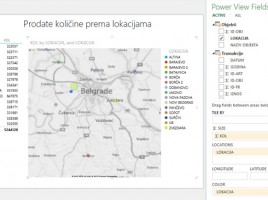
Power Query
Power Query is an Excel add-in that is used to retrieve data from various sources, connecting to them and purging data before we use them to create a report. It manipulates data in a worksheet, managed within structured table, and allows directly adding them the model. First release of Power Query was an optional add-in for Excel. In version 2016 it has become an integral part of the application. This technology is embedded in PowerBI service.




